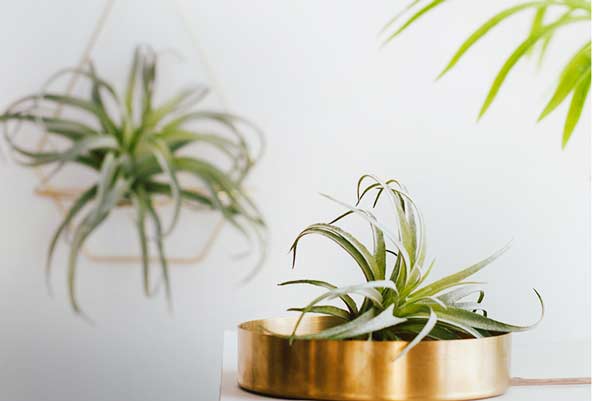Air Plant (Tillandsia) Profile
Written by Iris
Oct 20 2021
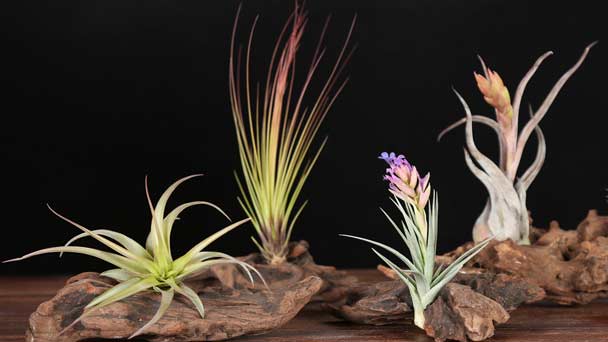
Air Plant (Tillandsia), members of the pineapple family, are epiphytes, meaning Air Plant (Tillandsia) depend on water and nutrients in the atmosphere to grow and thrive, while clinging to trees or other supports such as rocks.
Most air plants are native to areas such as the West Indies, Mexico, Central America, and South America, and some are even found growing in the southern United States. Here in Florida, especially in the southern part of the state, the T. fasciculata among other air plants and Bromeliads grow naturally in the wild in the Everglades. We also have Spanish moss growing in trees here in the south, which is actually not a moss at all, but is part of the the Tillandsia family, and is called T. usneoides. (Find more best indoor hanging plants here.)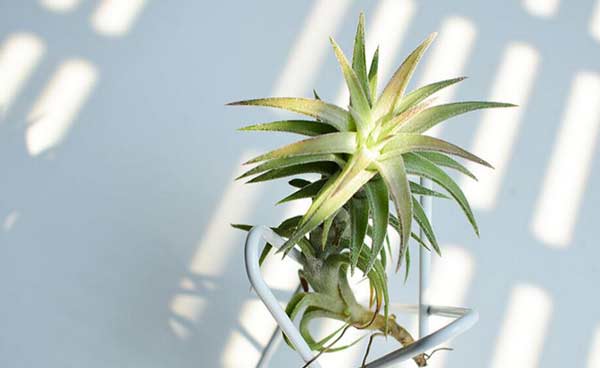
Keep in strong but diffused light, good air circulation, high humidity, and a temperature of approx. 25°C (75°F) for germination
For the first two years or so, the plants require the same growing conditions as for germination
Water by misting heavily whenever the surfaces of the young plants appear dry
Once the plants have reached 1.25cm (½in) in height, they are ready to be separated onto individual pieces of substrate to grow on to flower
When the pup is at least a third the size of the parent plant, it is mature enough to separate.
Identify the pup's base, where it is attached to the parent plant.
Gently separate the pup off the parent plant. Aim to pull the pup from its base leaves so you don't damage the top leaves. You may need to use a sharp knife or scissors if the pup doesn't easily detach.
Keep in mind that air plants can take years to bloom and produce pups, so you may need to cultivate Tillandisa for some time before propagation.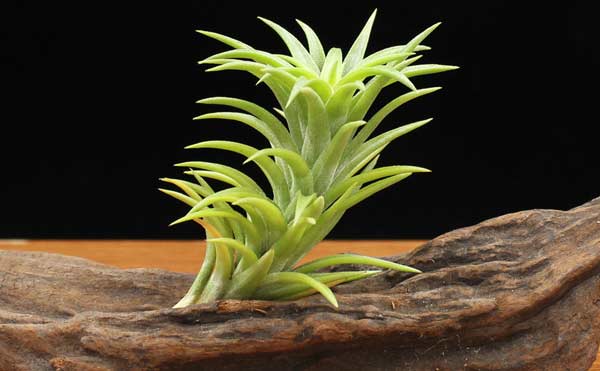
'Inoantha,' also called a sky plant, has spiky leaves that start out silver-hued and turn a deeper shade of green as the plant matures. Native to Mexico and Costa Rica, it shoots out a striking yellow or white flower. Common varieties include ‘Guatemala,’ ‘Mexican’ and ‘Rubra.’
'Aeranthos' is native to Brazil, Paraguay and Argentina. This spiky little plant produces a pink bud that opens into a deep purple flower. Varieties include ‘Grey Ghost,’ ‘Bronze,’ ‘Black,’ and ‘Purple,’ after the colors of their leaves.
'Streptophylla,' also know as Shirley Temple for its curly mane of leaves, likes drier conditions than other air plants.
'Latifolia' is one of the largest air plants, a spiky plant that grows up to 18 inches tall. It produces a tall, red bloom spike.
'Xerographica,' known as Xeros, are everyone’s favorite. These natives of Mexico have silver leaves that curl and spiral around themselves as they grow.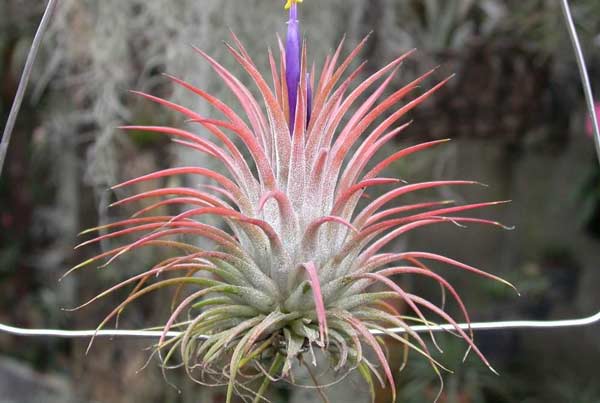
Air Plant (Tillandsia) PictureAir Plant (Tillandsia) InfoAir Plant (Tillandsia) Distribution AreaHow to Grow and Care for Air Plant (Tillandsia)How to Grow Air Plant (Tillandsia)How to Care for Air Plant (Tillandsia)Uses of Air Plant (Tillandsia)Varieties of Air Plant (Tillandsia)Air Plant (Tillandsia) Common Pests/DiseasesAir Plant (Tillandsia) Design TipsAir Plant (Tillandsia) Companion Plants
Air Plant (Tillandsia) Picture
Air Plant (Tillandsia) Info
| Botanical Name | Tillandsia |
| Common Name | Air plant |
| Plant Type | Houseplant or annual |
| Mature Size | 6 inches tall and 6 to 18 inches wide |
| Sun Exposure | Bright, indirect light to full sun |
| Bloom Time | Once, when fully matured |
Air Plant (Tillandsia) Distribution Area
There are over 600 different species of Tillandsia ( air plants) growing in various regions of the world. Most air plants are found in humid rainforest climates, but some can even be found in less than hospitable environments. Air plants can be found growing in trees, amongst rocks, in deserts, in rainforests, on cliffs and rock faces, and even on cacti.Most air plants are native to areas such as the West Indies, Mexico, Central America, and South America, and some are even found growing in the southern United States. Here in Florida, especially in the southern part of the state, the T. fasciculata among other air plants and Bromeliads grow naturally in the wild in the Everglades. We also have Spanish moss growing in trees here in the south, which is actually not a moss at all, but is part of the the Tillandsia family, and is called T. usneoides. (Find more best indoor hanging plants here.)

How to Grow and Care for Air Plant (Tillandsia)
How to Grow Air Plant (Tillandsia)
- With Seeds
Keep in strong but diffused light, good air circulation, high humidity, and a temperature of approx. 25°C (75°F) for germination
For the first two years or so, the plants require the same growing conditions as for germination
Water by misting heavily whenever the surfaces of the young plants appear dry
Once the plants have reached 1.25cm (½in) in height, they are ready to be separated onto individual pieces of substrate to grow on to flower
- With Pups
When the pup is at least a third the size of the parent plant, it is mature enough to separate.
Identify the pup's base, where it is attached to the parent plant.
Gently separate the pup off the parent plant. Aim to pull the pup from its base leaves so you don't damage the top leaves. You may need to use a sharp knife or scissors if the pup doesn't easily detach.
Keep in mind that air plants can take years to bloom and produce pups, so you may need to cultivate Tillandisa for some time before propagation.
How to Care for Air Plant (Tillandsia)
- Light
- Water
- Temperature and Humidity
- Fertilizer

Uses of Air Plant (Tillandsia)
Air plants can survive and thrive almost anywhere, so they're a great addition to a sunroom or a college dorm room. Not only do they bring a bit of greenery to your space, but they can actually help purify the air. During photosynthesis, air plants absorb carbon dioxide and convert it to oxygen, acting as an all-natural air purifier. So the answer is yes: house plants can help you overcome those pesky allergies and generally breathe better.Varieties of Air Plant (Tillandsia)
'Bulbosa' looks like a sea creature, with a bulb-shaped base and tentacle-like leaves. Varieties include ‘Guatemala’ and ‘Belize.’'Inoantha,' also called a sky plant, has spiky leaves that start out silver-hued and turn a deeper shade of green as the plant matures. Native to Mexico and Costa Rica, it shoots out a striking yellow or white flower. Common varieties include ‘Guatemala,’ ‘Mexican’ and ‘Rubra.’
'Aeranthos' is native to Brazil, Paraguay and Argentina. This spiky little plant produces a pink bud that opens into a deep purple flower. Varieties include ‘Grey Ghost,’ ‘Bronze,’ ‘Black,’ and ‘Purple,’ after the colors of their leaves.
'Streptophylla,' also know as Shirley Temple for its curly mane of leaves, likes drier conditions than other air plants.
'Latifolia' is one of the largest air plants, a spiky plant that grows up to 18 inches tall. It produces a tall, red bloom spike.
'Xerographica,' known as Xeros, are everyone’s favorite. These natives of Mexico have silver leaves that curl and spiral around themselves as they grow.

Air Plant (Tillandsia) Common Pests/Diseases
Look out for mealybugs and scale insects on air plants. If your plant gets an infestation, treat it with a Tillandsia-safe pesticide. Dampness is the enemy of air plants. Remember, the secret of air plant care is getting the water right. Too much moisture will cause a plant to rot from the inside out. Leaf rot or fungal diseases can also be a problem when air plants are too damp.Air Plant (Tillandsia) Design Tips
Since air plants don't require roots to survive, you can think outside traditional pottery when deciding how to exhibit them. Driftwood, seashells, and glass hanging planters provide a beautiful setting for Tillandsia. After you choose your media, attach the air plant with a wire or by using an adhesive like a low-temperature hot glue or E6000. Try grouping air plants of different varieties and colors for a modern display, or place one against a contrasting texture for a unique touch in your room or office.Air Plant (Tillandsia) Companion Plants
Place Air Plant amongst your larger houseplants, between the leaves or around the base. Air Plant make ideal companions for orchids, cactus and bromeliads. Or, just set them unadorned on a windowsill or sunny shelf. These air plants are wired to a piece of bark.Latest Updated
- Benefits of Bugleweed - 7 Science-backed Health Benefits
- Bugleweed Dangers & Side Effects - Is It Poisonous?
- How to Plant Evergreen Trees - What You Should Know
- When to Plant Evergreens - Grow Guide for Evergreen Trees
- 12 Wonderful Evergreen Shrubs for Your Garden
- 12 Popular Evergreen Plants with Pictures for Beginners
- When And How To Prune A Lilac Bush Like a Pro
- How to Grow & Care for Lilac Vine (Hardenbergia Violacea)
- Japanese Lilac Tree (Syringa Reticulata) Care & Propagation Guide
- Shumard Oak Pros and Cons - What to Know
Popular Articles
- Winter maintenance of Antirrhinum Majus
- How to Grow Terminalia Mantaly Tree
- How to Grow and Care for Crossostephium Chinense
- How to grow Antirrhinum Majus in spring
- Peristeria Elata (Dove Orchid) Profile: Info & Care Guide
- Underwatered Snake Plant (Sansevieria Trifasciata) - Signs And How To Fix
- How to Care for Brazilian Jasmine Plant (Mandevilla Sanderi)
- How to Grow & Care for Graptopetalum Purple Delight in Summer
- Rosa Chinensis (China Rose): Plant Growing & Care Tips
- How to Care for Baby Sun Rose (Aptenia Cordifolia)
